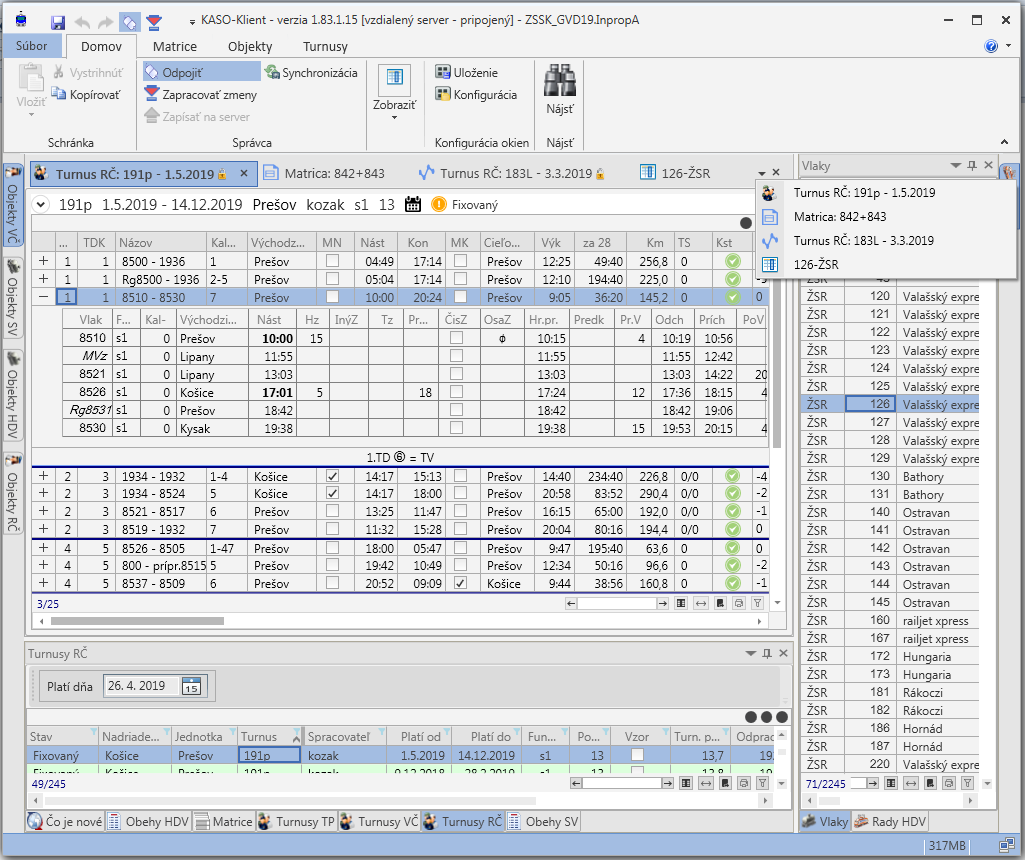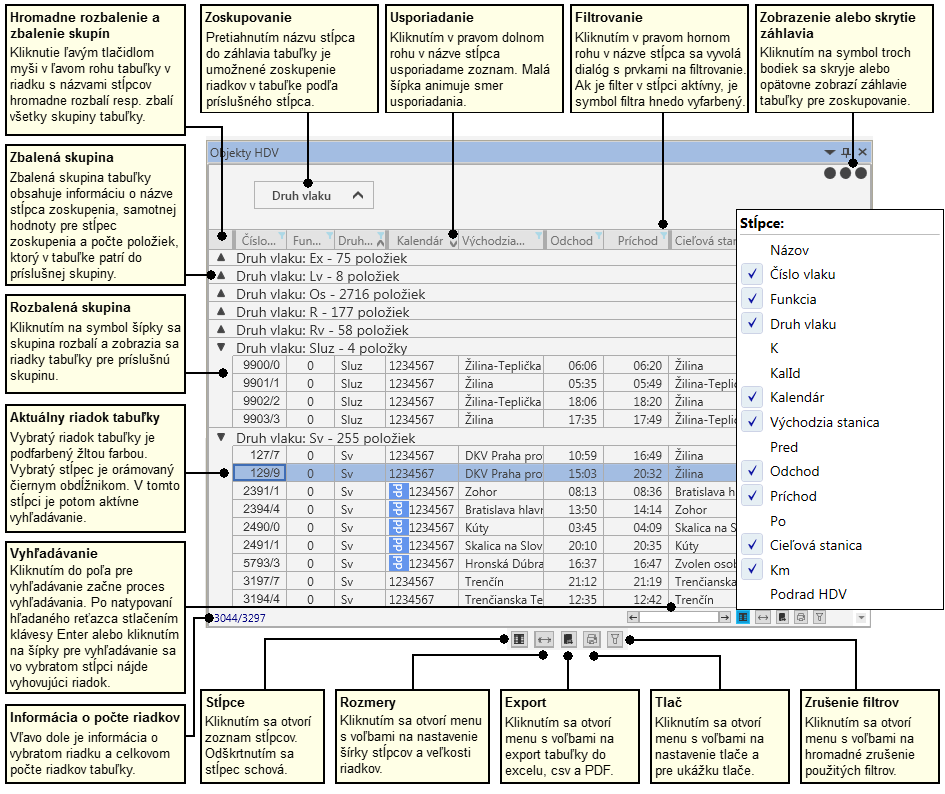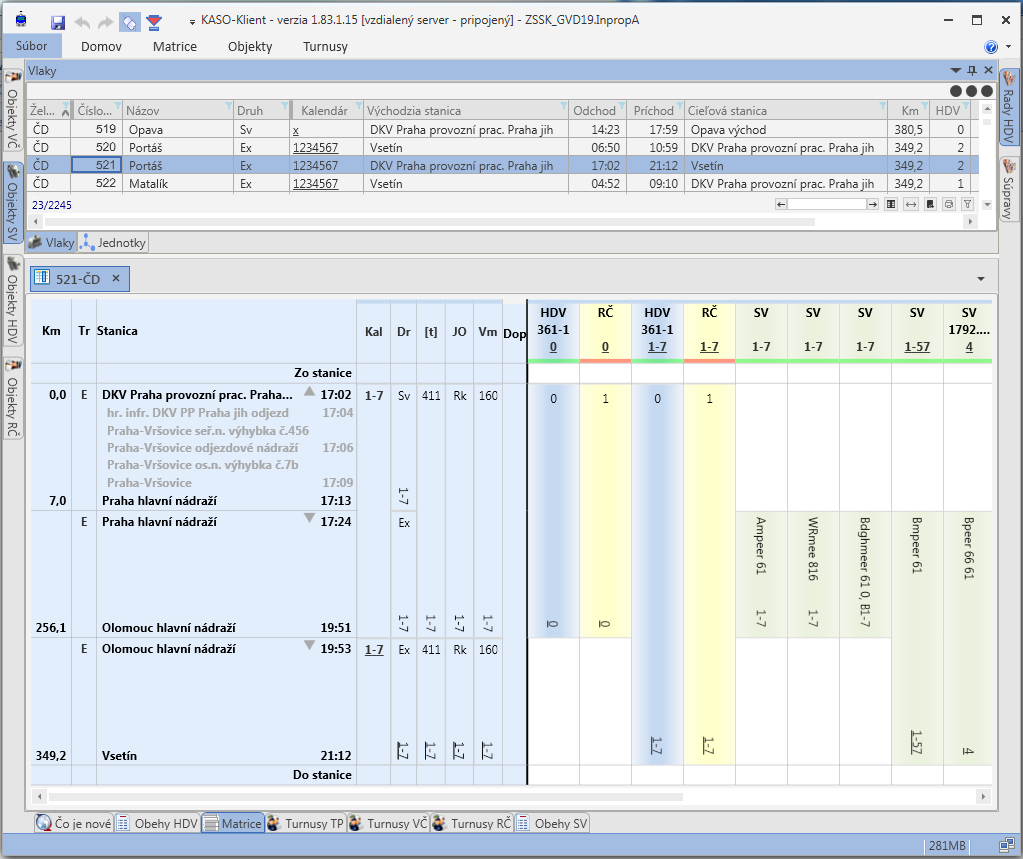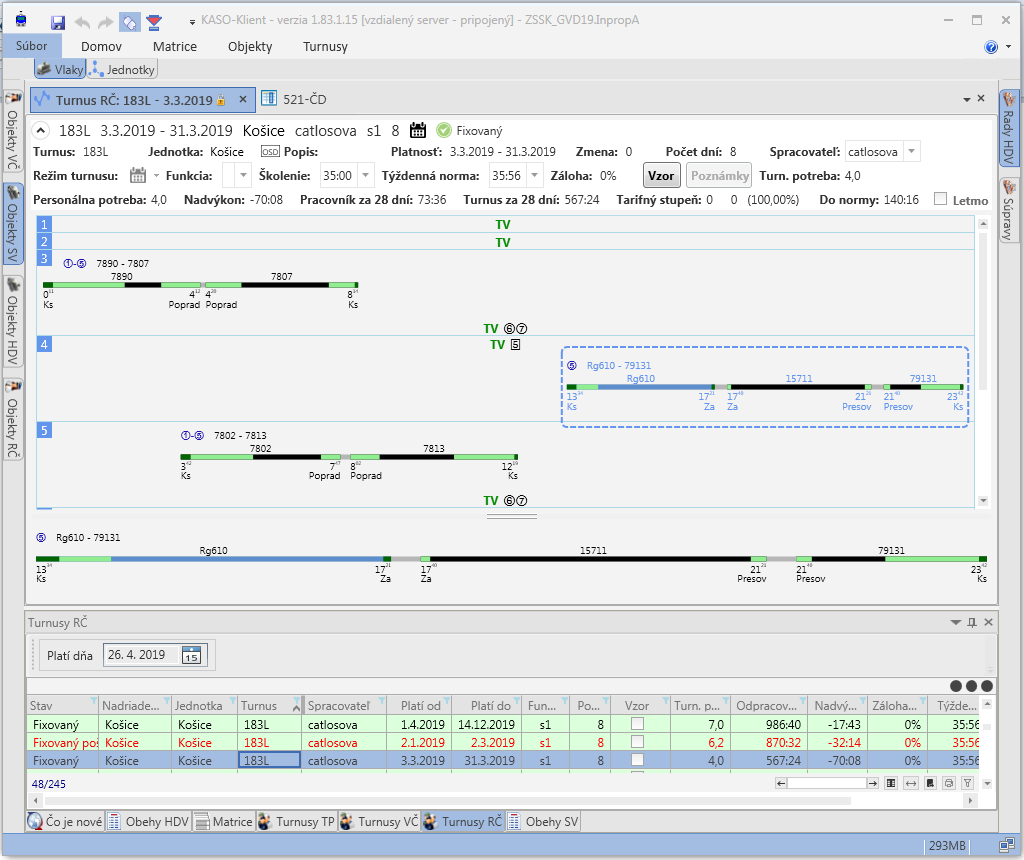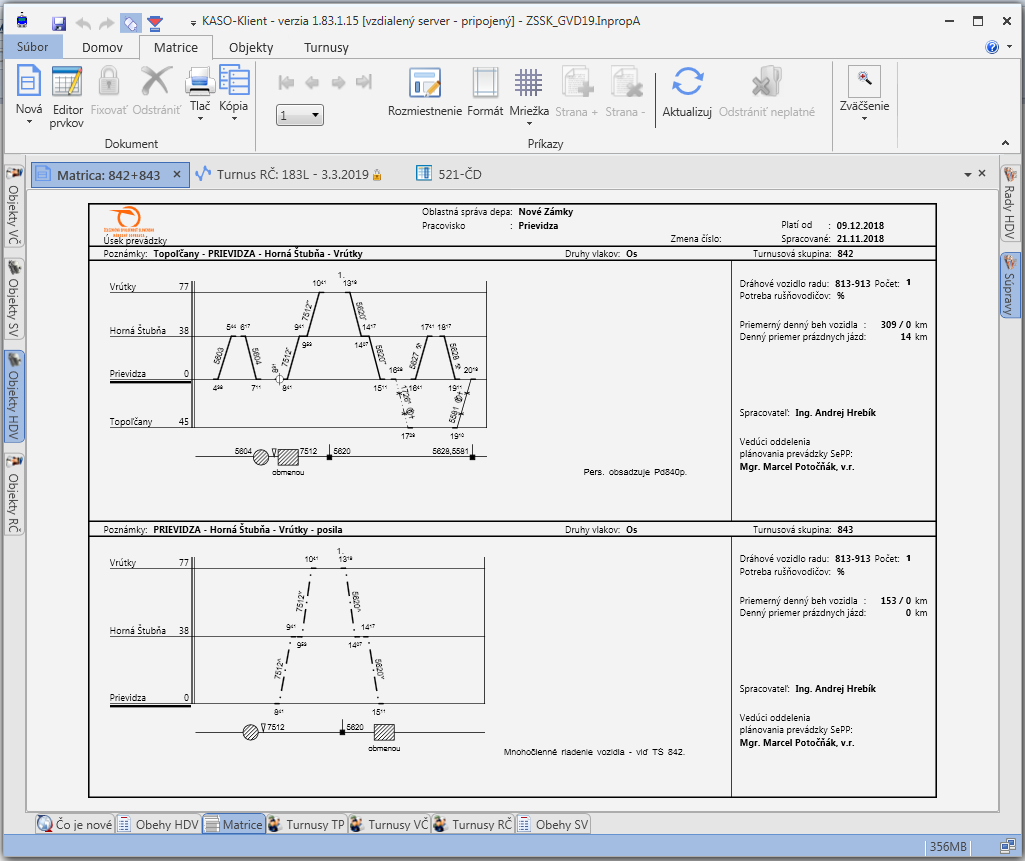KASO
Flagship of company
In 2006, as the information technologies moved significantly forward, the development of new applications for designing rail transport schedules has been launched. The new information system for the railway operator was named KANGO (online system for designing schedules) and the new information system for the carriers was named KASO (system for creating circulation and shift schedules). The core of the KASO system are the modules for designing circulations and shifts plans. It consists of the shared application server and two client applications – one for creating locomotives and train-sets circulations plans called “KASO-Voz klient” and the second one for creating locomotive crews and train crews schedules called “KASO-Klient”. The clients are desktop applications that allow full-featured work both online (connected to the server) and offline (not connected to the server).
The server runs as an online service and, except for communication with clients, it also ensures communication with KANGO and KASO application servers. The synchronisation with these application servers runs in regular intervals that are configurable for each data instance separately. A two-channel connection is used for communication with the clients and the connected client receives the information from the server immediately after the server retrieves and processes new/edited data from other clients (application servers). The server service offers an extension of user interface in form of a desktop application called “Server manager”. It allows the user to run a whole set of tools for managing individual data instances and monitoring the work that is being done in individual data instances (e.g. monitoring connected users and their interactions with the server, showing error messages etc.)
The module for creating locomotives circulations and train-sets circulations is built with the .NET Framework Windows Forms technology. Almost all forms (windows) in the application are modeless, thus the user can switch between them without closing it. This feature, together with the possibility to work both online and offline, make the module a modern application that brings the user many benefits. Module’s important feature for communication with the server is a window displaying the requests for server uploads (done manually by the user, e.g. after creating new circulation plan or editing circulation), and a list of changes that server sent to the client during the session. Using simple commands, a user can send his changes to the server (new circulation, edited circulation…) or incorporate changes from the server into his client data.
The module for planning locomotive crews and train crews shifts is built with a latter technology – .NET Framework WPF (Windows Presentation Foundation) from Microsoft. Compared to the Windows Forms technology, it better separates the data logic and output, supports faster rendering, animations, offers higher level of user comfort, and other new technologies. Thanks to the vector graphics, it offers unlimited options for drawing matrices, with no distortion of an image at any magnification (lines, curves, texts…). Regarding the data, the application is built on the same basis as KASO-Voz klient and the functionality of the KASO-Voz klient is expected to be transferred into the KASO-Klient in the future (this module should thus contain all KASO systems – one client for everything)

